The mysterious relic of Cherok To’kun
Where a strange communique from a distant era in history lives on silently in the present through the remnant of an ancient writing on a rock.
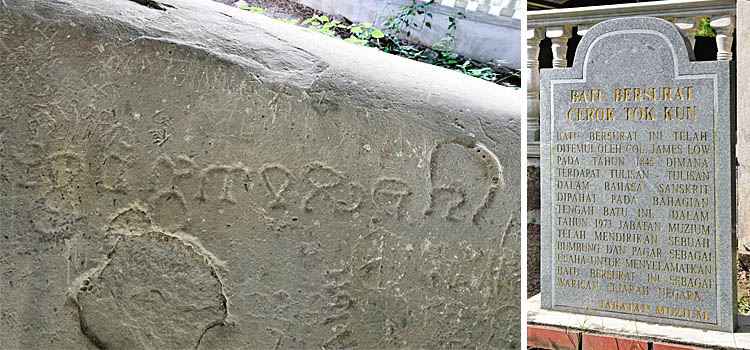
It is among the most ancient – if not the absolute oldest – written message from the past to still exist in Malaysia.
Lying unassumingly on the grounds of the St Anne’s Church in Bukit Mertajam, and screened from one’s sight along the main road by the grand new church building, is a boulder the size of a small lorry that bears the remnant of a mysterious inscription from centuries ago.
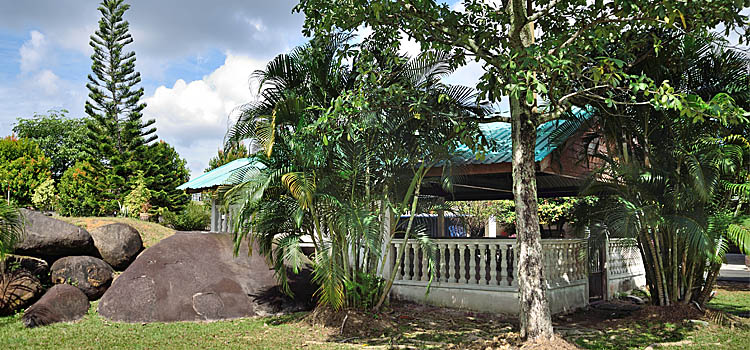
The Cherok To’kun Relic, as it is called today, is said to be composed in the now defunct Pallava alphabet, which flourished under the renowned Pallava dynasty of southern India about 1,500 years ago.
This extraordinary artefact is a testament that the great Bujang Valley civilisation in Kedah, which existed between 600 BCE and the 13th century CE, had most certainly extended to this corner of the peninsula.
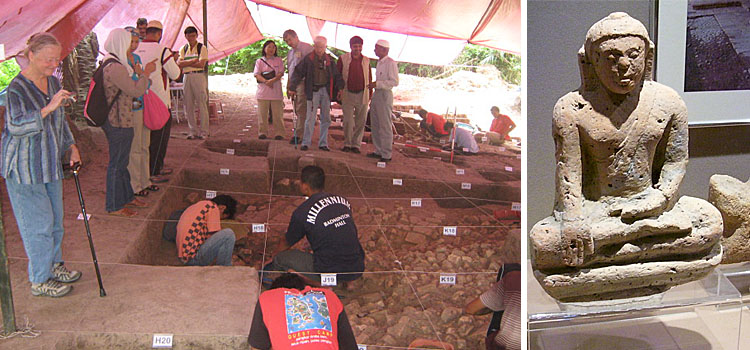
Top photo: left - international archaeologists and historians visiting the Sungai Batu site in Bujang Valley in 2010; right - an ancient terracotta figures found in the Bujang Valley.
According to information at the Bujang Valley museum in Merbok, near Sungai Petani, the inscription dates back to the 5th century CE. It has been translated into English as follows:
“I acknowledge the enemies of the contented King Ramaunibha and the wicked are ever afflicted. This is said by Manikatha, the protector of all great Buddhas. In every form of life knowledge becomes manifest everywhere and in every way. Karma, which sports with passions, is the cause of transmigration.”
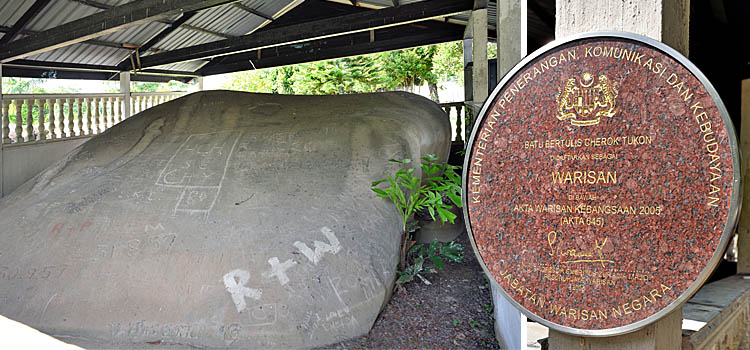
The rock was certified as a heritage monument by Malaysia’s Heritage Commissioner Dato’ Prof Emeritus Zuraina Majid in 2006. A plaque to declare the listing is exhibited on a shed which has been built over the rock to help preserve its surface from the natural elements. It effectively means that this relic is protected under the provisions of the National Heritage Act 2005.
Interestingly, the boulder is also home to another etching – that of James Low, the British colonel who is said to have discovered the Pallava writing here in 1845. Low apparently had his own name engraved next to what today remains of the ancient message. The carving of his name and the year 1845 exists on the boulder till the present.
Unfortunately, Low’s conceited scrawl next to the age-old inscription is not the only defacement suffered by the sacred rock. Over the last few years it has been vandalised in various other spots with people scribbling names and frivolous messages on the artefact, crassly inconsiderate to its precious historical value.
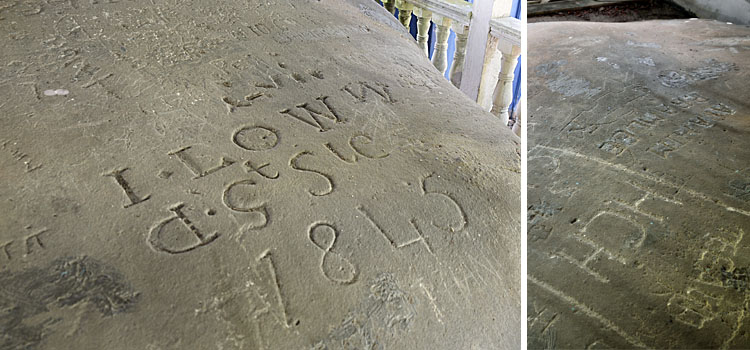
Such gross insensitivity may be attributed to a society piteously lacking in pride for its own cultural and civilisational heritage. The remains of the Pallava script has persevered nevertheless, seemingly undaunted by the surrounding changes brought about by both humans and the forces of nature.
We may not know today who wrote the strange inscription. We may not be able to tell how the person had lived and where he came from. We cannot determine the circumstances in which the writing was made. All that is obvious is that it resounds with a religious doctrine that may well have deeply influenced this part of the world in that era of history.
Whatever its origins, the relic has survived in the present, a reminder that the 'gene pool' – our culture, language and traditions – we are imbued with today is evolved from generations that had lived here before. The writing served as a message not just for those in its contemporaneous past, but is also as an awe-inspiring link between our society here today and a people who walked on this same land in a different age, across a vast and overwhelming chasm of time.
-------------------------------------------
Written by Himanshu Bhatt
Photographs © Adrian Cheah
© All rights reserved.